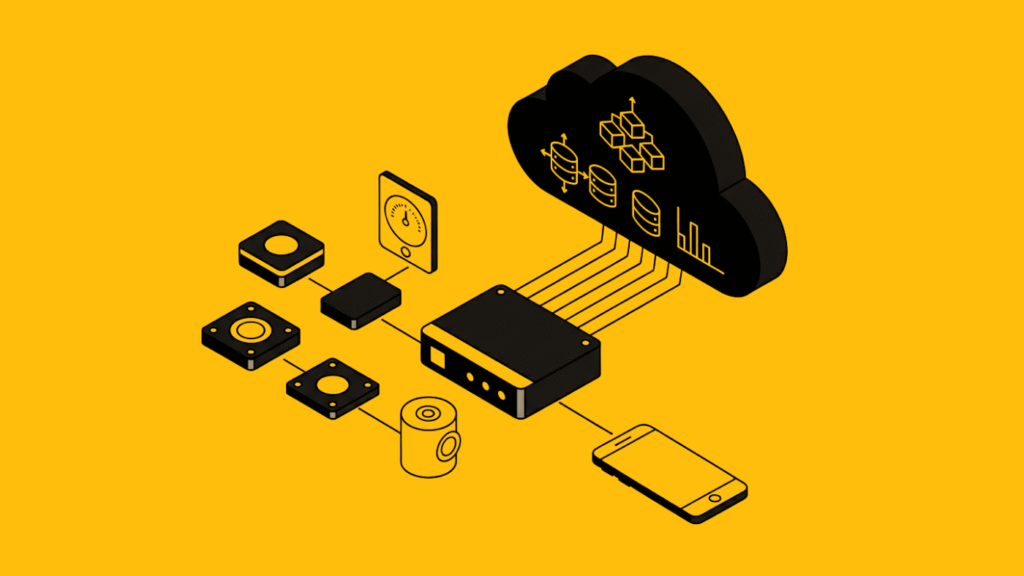Executive Summary
In the fast paced world of today where technology and platforms are moving fast, within weeks, days, and maybe soon in hours, the technological landscape is changing. Through ever newer GenAI models like GPT. Yet we are still stuck with the same long validation cycles for hardware.
Modern embedded systems development is faced with two conflicting needs:
- Organizational needs for iterative development, accounting for changing requirements – Agile
- Inherently long and inter-dependent hardware development – Waterfall
Waterfall approach introduces unacceptable risk and cost by deferring critical feedback and validation to the end of the development lifecycle. A modern, adapted Agile framework—one that integrates cross-functional teams from concept to deployment—is the only viable strategy. This paper demonstrates how an iterative, continuous-feedback model, tailored to the unique constraints of hardware, enables organisations to accelerate time-to-market, reduce the total cost of ownership (TCO), and build a resilient engineering culture. For CTOs and Engineering Managers in automotive, med-tech, and industrial automation, this is not a theoretical exercise—it is a competitive necessity.
1. The Flaw in Legacy Development: Waterfall and Integrated Systems
Legacy project management, particularly the Waterfall model, is fundamentally misaligned with the reality of modern embedded systems. The model’s rigid, phased gate structure—Requirements, Design, Implementation, Testing—assumes that a complete Bill of Materials (BOM) and system architecture can be finalized at the outset.
This premise fails when dealing with complex, interdependent hardware and software. In this environment, a change in a single PCB component or a minor tweak to a firmware driver can cascade into a complete system-level failure. Waterfall’s late-stage testing and verification (V&V) processes, often occurring after a design freeze (DF), amplify risk. Issues found at this stage—whether a timing constraint violation, a memory leak, or a thermal management problem—can lead to catastrophic schedule slips and costly re-spins of the Printed Circuit Board (PCB). The cost of fixing a bug discovered during the test phase is orders of magnitude greater than one found during the design phase.
Historically, Waterfall was suitable for simpler, stable hardware. However, with the advent of System-on-a-Chip (SoC) architectures, real-time operating systems (RTOS), and heterogeneous computing, this liability is no longer sustainable.
2. The Agile Advantage: An Adaptive Framework
The Agile framework, rooted in software engineering, provides a powerful alternative. Its core principles—iterative development, working prototypes over documentation, customer collaboration, and embracing change—directly mitigate the risks inherent in Waterfall.
Agile’s strength for embedded systems lies not in a rigid application of Scrum or Kanban, but in a modified, pragmatic approach. The goal is to establish a continuous learning loop that provides frequent feedback on product functionality and system-level performance. This shifts the focus from a single, high-risk product launch to a series of low-risk, incremental releases.
Key benefits for engineering leaders include:
- Reduced Risk: Continuous Integration (CI) and frequent testing validate the system architecture and firmware, catching errors early. This prevents the compounding cost of late-stage failures.
- Faster Time-to-Market: By breaking down the product roadmap into smaller sprints and delivering functional prototypes, teams can accelerate the development cycle and demonstrate progress to stakeholders.
- Enhanced Quality: Continuous V&V, combined with practices like pair programming for firmware and continuous hardware verification (CHV), maintains a high level of code and design quality, preventing technical debt from accumulating.
- Improved Collaboration: Agile’s emphasis on cross-functional teams dismantles the silos between hardware and software engineers, as well as with other teams (e.g., manufacturing). This alignment is critical for systems where the software stack is deeply intertwined with the physical design.
3. The Imperative of Cross-Functional Teams
In a modern product development environment, cross-functional collaboration is not a luxury—it’s an architectural requirement. The interface between hardware and software is no longer a simple handoff; it’s a dynamic, co-evolving relationship.
For example, in an automotive ADAS, the firmware for an ECU must be developed in constant communication with the physical sensor design and the vehicle’s CAN bus architecture. A hardware-level decision on a power management IC has direct implications for the software’s drivers and state machine.
A cross-functional team, composed of embedded software engineers, electrical engineers (EE), mechanical engineers (ME), and test engineers, provides a holistic perspective. This ensures:
- Early Problem Detection: When an EE discovers a supply chain risk for a critical component, the software and manufacturing teams are immediately aware and can collaboratively explore alternative solutions or design modifications.
- Optimal System Design: By working together from the start, teams can optimize for the entire system, not just their individual domain. This prevents sub-optimal designs that might be perfect for hardware but impossible for software to run efficiently, or vice versa.
- Accelerated Decision-Making: With a shared product backlog and clear objectives, teams can make rapid, informed decisions without the bottlenecks of traditional departmental approvals. This is enabled by a culture of psychological safety, where engineers are comfortable flagging issues and proposing solutions without fear of blame.
4. Adapting Agile for Hardware: Strategies and Solutions
A “lift-and-shift” approach to Agile from pure software to hardware will fail. The key is to adapt the framework to respect the realities of hardware development, such as long-lead-time components and the tangible nature of physical products.
Modified Agile Practices:
- Reviewable Increments: Instead of a shippable product, a hardware sprint can culminate in a “reviewable increment.” This could be a detailed PCB layout, a 3D-printed enclosure, a simulation of a thermal model, or a proof-of-concept prototype running a basic firmware stack. These artifacts are crucial for gathering stakeholder feedback before a major design freeze.
- Phased Design Freezes: Replace the single, high-risk design freeze with smaller, more frequent “micro-freezes” on specific sub-systems or modules. This allows for long-lead-time components to be ordered early while other parts of the design remain iterative.
- Vertical Slices: Focus on delivering “vertical slices” of functionality. This means developing a complete, albeit minimal, feature (e.g., a simple user interface and a single sensor reading) rather than completing all schematics or all firmware modules in isolation. This demonstrates real-world functionality early in the product lifecycle.
- Modular Architecture: Design the system with a modular hardware and software architecture. This allows different sub-systems to be developed and iterated on independently, minimizing cross-module dependencies and the cost of change.
These adapted practices, supported by integrated design tools and a CI/CD pipeline for firmware, are the backbone of a successful hardware-centric Agile implementation.
The Future of Embedded Systems Development
The demands of modern embedded systems—from medical imaging devices to factory automation platforms—have rendered traditional development methodologies obsolete. The path to building innovative, high-quality products is no longer linear; it is iterative, collaborative, and deeply integrated.
For executives and engineering leaders, adopting a hybrid and adaptive Agile framework is a strategic imperative. By leveraging the principles of Agile, respecting the constraints of hardware, and empowering cross-functional teams, you can mitigate risk, reduce the cost of change, and significantly accelerate your time-to-market. The future belongs to organizations that embrace this integrated, adaptive approach to hardware development.
Better Devices partners with hardware teams to implement customised Agile methods that accelerate development and enhance competitive advantage. Contact us to discuss your engineering objectives.



